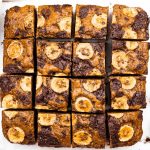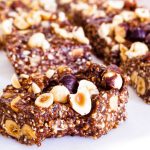
Our Wholefoods Kitchen
Tips for Storing your Wholefoods
Whole foods are packed full of minerals, vitamins, fats, proteins and carbohydrates, all of which are susceptible to natural environmental elements such as light, heat, air, moisture and insects. Due to this vulnerability, whole foods are best kept under certain conditions in order to slow down the degradation of nutrients and to prevent the growth of unwanted microbes and bugs.
Foods high in fats such as nuts, seeds and coconut products are exceptionally vulnerable, as well as nut and seed meals and all flours. These foods can readily absorb odours from the pantry or fridge such as herbs and spices, especially if stored in paper or plastic bags. Therefore they are best kept in airtight plastic or glass containers and for a longer shelf life, you can store these foods in the freezer. Remember that oils and roasted foods such as nuts can oxidise much faster so it’s always best to refrigerate them.
Legumes and grains whether whole or as flour are particularly susceptible to bugs. These foods can sometimes contain weevil larvae, especially if it’s organic or biodynamic as no pesticides or chemicals have been used. However, purchasing smaller amounts at a time, storing in airtight containers and keeping the product in the fridge will prolong the shelf life and safeguard the quality of your food. You can also freeze legumes and grains for 1-2 weeks to kill off any potential larvae.
Protein powders, tamari (wheat-free soy sauce), herbs and spices store well in the cupboard for weeks or months in an airtight container away from moisture, light and heat, ideally under 24 C.
Storing whole foods well, especially when you can refrigerate or freeze them, can mean fewer trips to the shop, saving you time and money as well as keeping the nutrients and the quality of the food preserved for a longer time.



















Leave a reply